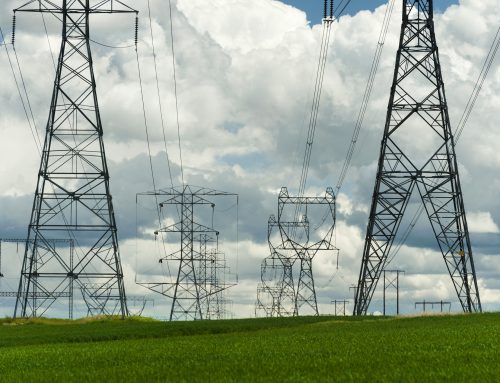Analyzing MAOP with a Hydrotest Solution
By Amir Panjwani

Hydrostatic Pressure Testing or Hydrotesting is a method used by Pipeline engineers and operators to evaluate pipeline integrity, including cracking, mechanical issues, weld defects, and other related pipe abnormalities. This diagnostic value is particularly relevant in three scenarios: verifying newly constructed pipelines, recertifying existing pipelines for maximum allowable pressure (MAOP), and investigating defects caused by accidents. Engineers and operators face multiple challenges that demand a careful balance between adhering to industry standards, effectively managing costs, and prioritizing safety considerations.
Selecting a Hydrotesting Software
Given the wide range of available options, evaluating the varying levels of value offered by each can be challenging. When making a selection, it is important to consider the following key factors:
Industry Standards
PHMSA’s regulatory requirements emphasize the need for traceable, verifiable, and complete (TVC) recordkeeping, placing increased pressure on engineers to generate and uphold documentation. The recent regulations outlined in CFRs 192 and 195 mandate that all pipeline case documentation adheres to TVC recommendations. In the midstream oil and gas industry, the regulatory environment plays a crucial role in determining quality and productivity, and therefore, success relies on efficient and high-quality software that meets or surpasses various standards, including TVC compliance.
Managing Cost
Water management during hydrotesting is a crucial consideration that demands time and effort from engineers. Insufficient planning and documentation of water sourcing and disposal strategies can result in expensive repairs and remediation. Selecting an unsuitable water source with incorrect pH, hardness or bacteria content has the potential to cause pipeline damage, potentially requiring the replacement of extensive sections. Improper water disposal poet-test can lead to regulatory fines or additional clean-up expenses. Software solutions are essential in managing such risks and preventing excessive operational and capital expenditures.
Safety Considerations
Ensuring safety during pipeline hydrotesting is paramount, governed by explicit standards detailed in various rules and guidelines. These regulations safeguard both personnel and the integrity of the pipeline system. Software solutions are essential in effectively adhering to these standards, providing support, and enabling compliance. By streamlining processes and monitoring safety parameters, these solutions help mitigate potential risks and foster a secure working environment.
When considering these key factors and challenges, the question of whether to build or buy the solution often arises. To determine the answer, it is essential to examine the following elements:
Building a Hydrotesting Solution
In most cases, building a Hydrotesting analysis tool is done through spreadsheets. This method of analysis can pose many obstacles for the user such as but not limited to:
- Knowledge Transfer: When a solution is built manually, usually by an engineer, the methods, formulas, and calculations are put at risk when the solution’s creator either leaves or retires. The knowledge of the solution may not properly be handed over to the successor and this can result in increased expenditure.
- Limitations: Having to sift through multitudes of data along with a lack of integration and difficult reporting capabilities can make for a tedious process that can be excessively time consuming.
- Reliability: Spreadsheets are prone to human error, lack control and security, and can be difficult to troubleshoot or test, among other things. These issues can lead to an unsecured solution that may put the operation at a greater risk rather than solving the problem.
Buying a Hydrotesting Solution
Buying a software solution can oftentimes relieve the challenges posed by spreadsheets while providing additional benefits:
- Ease-of-use: A ready-made software solution will usually provide an intuitive UI, automation, and integration capabilities allowing the pipeline engineer to focus on the task at hand rather than worrying about the software they are using.
- Documentation: In many cases of Hydrotesting documentation, it has been discovered that engineers have simply scribbled notes on maps which fall far short of regulatory compliance. With automated reports and integration, pipeline engineers and organizations as a whole can comply with requirements for traceable, verifiable, complete (TVC) recordkeeping.
- Customer Support: Troubleshooting is made easier with experts available to aid in issues that arise with the software and who can provide periodic updates to the software to improve faults and issues.
Hydrotest PowerTool as a Solution
Technical ToolBoxes Hydrotest PowerTool is an intuitive semi-automated and GIS integrated design, planning, and verification application for pipeline pressure testing that ensures compliance with PHMSA’s Mega Gas Rule CFRs 192 and 195 for both new and existing pipelines. Pipeline engineers can automate traceable, verifiable, complete (TVC) record keeping, diagnose defects caused by accidents, assist in pipeline verification/recertification of MAOP, and generate an actionable project plan. The Hydrotest PowerTool allows select sections for testing based on multiple criteria including elevation head, class location changes, entity location, and others. It is also capable of automatically designating sections based on the available data. The Hydrotest PowerTool provides options to import location survey data, plan water sourcing, and disposal, and generate accurate elevation profiles through the integrated ESRI Map GIS tool along with displaying warning and failure indications based on the validity of the pressure test design.
Hydrotesting is a crucial tool for validating pipeline integrity, particularly in pipeline design, construction, and compliance qualification. However, very few commercial applications provide a comprehensive project plan and report that can be effectively utilized in the field. The Hydrotest PowerTool is an exceptional solution that fulfills the safety and regulatory requirements of today. It offers quality control for all pipeline data, ensures practicality in efficient hydrotest planning and reporting, prioritizes safety
to safeguard reputation, assets, and the community while upholding the highest standards of accountability and TVC record-keeping.

2026 API Compliance: What You Need to Know
2026 API Compliance: What You Need to Know By Kesley Price New rules. Tougher [...]
Corrosion Engineers: How Confident Are You in Your Remaining Strength Calculations?
Corrosion Engineers: How Confident Are You in Your Remaining Strength Calculations? By Kesley Price [...]
Why API Inspections Still Matter More Than Ever
Why API Inspections Still Matter More Than Ever By Kesley Price In an industry [...]









